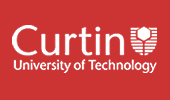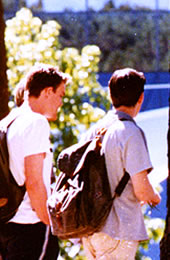Area: |
Department of Applied Chemistry |
Credits: |
25.0 |
Contact Hours: |
6.0 |
| |
| ** The tuition pattern below provides details of the types of classes and their duration. This is to be used as a guide only. For more precise information please check your unit outline. ** |
| |
Lecture: |
2 x 1 Hours Weekly |
Tutorial: |
1 x 1 Hours Weekly |
Laboratory: |
1 x 3 Hours Weekly |
Prerequisite(s): |
7040 (v.6) Chemistry 102 or any previous version
AND
7063 (v.6) Mathematics 102 or any previous version
|
| |
Syllabus: |
Thermodynamic systems and properties. Energy, temperature, heat and work. Reversible and irreversible processes. First Law. Enthalpy and thermochemistry. Entropy and the Second Law. Interpretation of entropy and entropy calculations. Entropy changes accompanying specific processes. Third Law. Free energy. Chemical equilibrium and spontaneous reactions. Thermodynamic relationships. Response of equilibria to pressure and temperature. Free energy and the chemical potential. Free energy and the chemical potential. Ideal solutions. Raoult's and Henry's Laws. Colligative properties of solutions. Phases, components and degrees of freedom. The Phase Rule. Vapour pressure diagrams and distillation. Liquid-liquid and liquid-solid phase diagrams. Eutectics. First and second order reactions. Reaction half-lives and determination of reaction order. Steady state approximation and rate determining step. Reaction and chain mechanisms. Lindemann mechanism of first order reactions. Activation energy and Arrhenius equation. Hard sphere collision theory. Collision theory continued Transition state theory and activated complex. Reaction coordinates. Comparison of collision and transition state theories. Contour diagrams and potential energy surfaces. Kinetics and equilibrium |
| |
| ** To ensure that the most up-to-date information about unit references, texts and outcomes appears, they will be provided in your unit outline prior to commencement. ** |
| |
Field of Education: |
10500 Chemical Sciences (Narrow Grouping) |
HECS Band (if applicable): |
2 |
|
Extent to which this unit or thesis
utilises online information: |
Informational |
Result Type: |
Grade/Mark |
|
Availability |
| Year |
Location |
Period |
Internal |
Area External |
Central External |
| 2004 |
Bentley Campus |
Semester 1 |
Y |
|
|
Area
External |
refers to external course/units run by the School or Department, offered online or through Web CT, or offered by research. |
Central
External | refers to external course/units run through the Curtin Bentley-based Distance Education Area |
|


